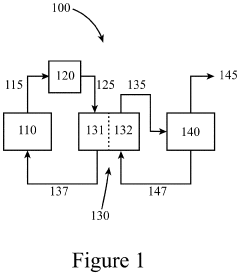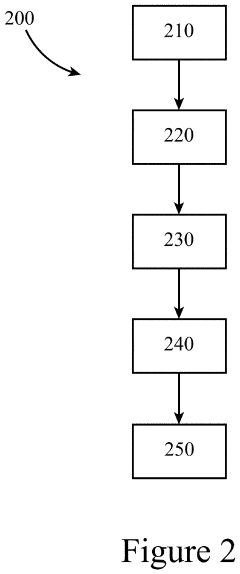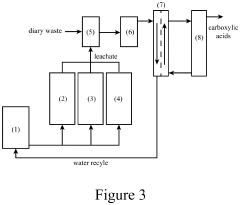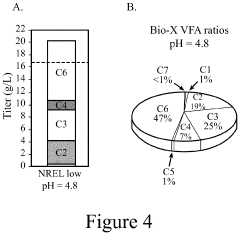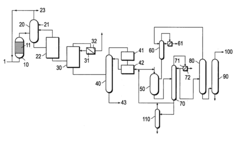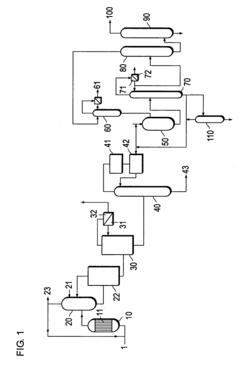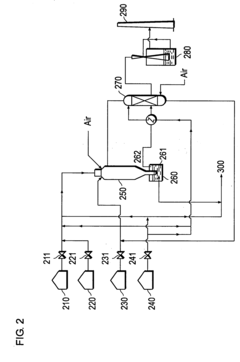Future Directions in Propionic Acid-Based Waste Management
JUL 3, 20259 MIN READ
Generate Your Research Report Instantly with AI Agent
Patsnap Eureka helps you evaluate technical feasibility & market potential.
Propionic Acid Waste Management: Background and Objectives
Propionic acid waste management has emerged as a critical area of focus in environmental sustainability and industrial efficiency. The evolution of this field can be traced back to the early 20th century when propionic acid was first identified as a byproduct in various industrial processes. Initially, the primary concern was the disposal of this waste, with little consideration for its potential value or environmental impact.
As environmental awareness grew in the latter half of the 20th century, the approach to propionic acid waste management began to shift. Regulatory frameworks were established to control the release of propionic acid into the environment, recognizing its potential harm to ecosystems and human health. This led to the development of basic treatment methods, primarily focused on neutralization and dilution.
The turn of the 21st century marked a significant turning point in propionic acid waste management. The concept of circular economy gained traction, prompting industries to view waste streams as potential resources. This paradigm shift led to increased research into the valorization of propionic acid waste, exploring its potential as a feedstock for other chemical processes or as an energy source.
Recent technological advancements have further expanded the possibilities in propionic acid waste management. Biotechnological approaches, such as microbial conversion of propionic acid into value-added products, have shown promising results. Simultaneously, advanced separation technologies have improved the recovery and purification of propionic acid from waste streams, enhancing its potential for reuse.
The current technological landscape in propionic acid waste management is characterized by a multifaceted approach, combining traditional treatment methods with innovative recovery and valorization techniques. The primary objectives in this field now extend beyond mere disposal to encompass resource recovery, energy efficiency, and the development of sustainable, closed-loop industrial processes.
Looking forward, the future directions in propionic acid-based waste management are likely to focus on several key areas. These include the development of more efficient and cost-effective recovery technologies, the exploration of novel applications for recovered propionic acid, and the integration of waste management strategies into broader sustainability initiatives within industries. Additionally, there is a growing emphasis on the development of predictive models and real-time monitoring systems to optimize waste management processes and minimize environmental impact.
As environmental awareness grew in the latter half of the 20th century, the approach to propionic acid waste management began to shift. Regulatory frameworks were established to control the release of propionic acid into the environment, recognizing its potential harm to ecosystems and human health. This led to the development of basic treatment methods, primarily focused on neutralization and dilution.
The turn of the 21st century marked a significant turning point in propionic acid waste management. The concept of circular economy gained traction, prompting industries to view waste streams as potential resources. This paradigm shift led to increased research into the valorization of propionic acid waste, exploring its potential as a feedstock for other chemical processes or as an energy source.
Recent technological advancements have further expanded the possibilities in propionic acid waste management. Biotechnological approaches, such as microbial conversion of propionic acid into value-added products, have shown promising results. Simultaneously, advanced separation technologies have improved the recovery and purification of propionic acid from waste streams, enhancing its potential for reuse.
The current technological landscape in propionic acid waste management is characterized by a multifaceted approach, combining traditional treatment methods with innovative recovery and valorization techniques. The primary objectives in this field now extend beyond mere disposal to encompass resource recovery, energy efficiency, and the development of sustainable, closed-loop industrial processes.
Looking forward, the future directions in propionic acid-based waste management are likely to focus on several key areas. These include the development of more efficient and cost-effective recovery technologies, the exploration of novel applications for recovered propionic acid, and the integration of waste management strategies into broader sustainability initiatives within industries. Additionally, there is a growing emphasis on the development of predictive models and real-time monitoring systems to optimize waste management processes and minimize environmental impact.
Market Analysis for Propionic Acid Waste Solutions
The market for propionic acid-based waste management solutions is experiencing significant growth, driven by increasing environmental concerns and stringent regulations on waste disposal. The global market for these solutions is expected to expand rapidly in the coming years, with a particular focus on industries such as agriculture, food processing, and pharmaceuticals.
In the agricultural sector, propionic acid-based solutions are gaining traction for their effectiveness in preserving animal feed and silage. The rising demand for high-quality animal products and the need to reduce feed wastage are key factors driving market growth in this segment. Additionally, the increasing adoption of intensive farming practices in developing countries is creating new opportunities for propionic acid-based waste management solutions.
The food processing industry represents another major market for propionic acid waste solutions. With growing consumer awareness about food safety and shelf life, manufacturers are increasingly turning to propionic acid as a natural preservative. This trend is particularly evident in the bakery and dairy sectors, where propionic acid helps prevent mold growth and extends product shelf life.
In the pharmaceutical industry, propionic acid-based waste management solutions are finding applications in the production of various medications and active pharmaceutical ingredients. The stringent regulations governing pharmaceutical waste disposal are driving the adoption of more effective and environmentally friendly waste management solutions.
Geographically, North America and Europe currently dominate the market for propionic acid waste solutions, owing to their well-established regulatory frameworks and high environmental awareness. However, the Asia-Pacific region is expected to witness the fastest growth in the coming years, driven by rapid industrialization, urbanization, and increasing environmental concerns in countries like China and India.
The market is characterized by the presence of both large multinational corporations and smaller, specialized companies. Key players are focusing on research and development to improve the efficiency and cost-effectiveness of their solutions. Collaborations between industry players and research institutions are also becoming more common, aimed at developing innovative waste management technologies.
Despite the positive outlook, the market faces certain challenges. The volatility of raw material prices, particularly propylene, can impact the production costs of propionic acid-based solutions. Additionally, the availability of alternative waste management technologies poses a competitive threat to the market.
In the agricultural sector, propionic acid-based solutions are gaining traction for their effectiveness in preserving animal feed and silage. The rising demand for high-quality animal products and the need to reduce feed wastage are key factors driving market growth in this segment. Additionally, the increasing adoption of intensive farming practices in developing countries is creating new opportunities for propionic acid-based waste management solutions.
The food processing industry represents another major market for propionic acid waste solutions. With growing consumer awareness about food safety and shelf life, manufacturers are increasingly turning to propionic acid as a natural preservative. This trend is particularly evident in the bakery and dairy sectors, where propionic acid helps prevent mold growth and extends product shelf life.
In the pharmaceutical industry, propionic acid-based waste management solutions are finding applications in the production of various medications and active pharmaceutical ingredients. The stringent regulations governing pharmaceutical waste disposal are driving the adoption of more effective and environmentally friendly waste management solutions.
Geographically, North America and Europe currently dominate the market for propionic acid waste solutions, owing to their well-established regulatory frameworks and high environmental awareness. However, the Asia-Pacific region is expected to witness the fastest growth in the coming years, driven by rapid industrialization, urbanization, and increasing environmental concerns in countries like China and India.
The market is characterized by the presence of both large multinational corporations and smaller, specialized companies. Key players are focusing on research and development to improve the efficiency and cost-effectiveness of their solutions. Collaborations between industry players and research institutions are also becoming more common, aimed at developing innovative waste management technologies.
Despite the positive outlook, the market faces certain challenges. The volatility of raw material prices, particularly propylene, can impact the production costs of propionic acid-based solutions. Additionally, the availability of alternative waste management technologies poses a competitive threat to the market.
Current Challenges in Propionic Acid Waste Treatment
Propionic acid waste treatment faces several significant challenges in the current landscape. One of the primary issues is the high concentration of organic matter in propionic acid-containing waste streams, which can lead to excessive biological oxygen demand (BOD) and chemical oxygen demand (COD) levels. This puts a strain on conventional wastewater treatment systems and can result in inefficient removal of pollutants.
Another major challenge is the corrosive nature of propionic acid, which can damage treatment equipment and infrastructure. This necessitates the use of specialized materials and protective coatings, increasing the overall cost of treatment processes. Additionally, the volatility of propionic acid can lead to air pollution concerns, requiring careful handling and containment strategies throughout the treatment process.
The presence of other organic compounds and impurities in propionic acid waste streams further complicates treatment efforts. These contaminants can interfere with separation and purification processes, reducing the efficiency of recovery methods and potentially compromising the quality of reclaimed materials.
pH regulation poses another significant challenge in propionic acid waste treatment. The acidic nature of the waste can disrupt the delicate balance required for biological treatment processes, necessitating careful pH adjustment and monitoring throughout the treatment cycle. This adds complexity and cost to the overall treatment system.
Scaling up treatment processes from laboratory to industrial scale presents its own set of challenges. Maintaining consistent performance and efficiency across larger volumes of waste requires careful engineering and process optimization. Furthermore, the variability in waste composition from different sources can make it difficult to develop standardized treatment protocols.
Energy consumption is a growing concern in propionic acid waste treatment. Many current treatment methods, such as advanced oxidation processes or membrane filtration, are energy-intensive. This not only increases operational costs but also raises questions about the overall sustainability of these treatment approaches.
Regulatory compliance adds another layer of complexity to propionic acid waste management. Stringent environmental regulations require thorough removal of contaminants before discharge, necessitating advanced treatment technologies and rigorous monitoring protocols. Meeting these standards while maintaining cost-effectiveness remains a significant challenge for many industries.
Lastly, the recovery and valorization of propionic acid from waste streams present both an opportunity and a challenge. While recovery can offset treatment costs and promote circular economy principles, developing efficient and economically viable recovery processes at scale remains a significant hurdle in the field of propionic acid waste management.
Another major challenge is the corrosive nature of propionic acid, which can damage treatment equipment and infrastructure. This necessitates the use of specialized materials and protective coatings, increasing the overall cost of treatment processes. Additionally, the volatility of propionic acid can lead to air pollution concerns, requiring careful handling and containment strategies throughout the treatment process.
The presence of other organic compounds and impurities in propionic acid waste streams further complicates treatment efforts. These contaminants can interfere with separation and purification processes, reducing the efficiency of recovery methods and potentially compromising the quality of reclaimed materials.
pH regulation poses another significant challenge in propionic acid waste treatment. The acidic nature of the waste can disrupt the delicate balance required for biological treatment processes, necessitating careful pH adjustment and monitoring throughout the treatment cycle. This adds complexity and cost to the overall treatment system.
Scaling up treatment processes from laboratory to industrial scale presents its own set of challenges. Maintaining consistent performance and efficiency across larger volumes of waste requires careful engineering and process optimization. Furthermore, the variability in waste composition from different sources can make it difficult to develop standardized treatment protocols.
Energy consumption is a growing concern in propionic acid waste treatment. Many current treatment methods, such as advanced oxidation processes or membrane filtration, are energy-intensive. This not only increases operational costs but also raises questions about the overall sustainability of these treatment approaches.
Regulatory compliance adds another layer of complexity to propionic acid waste management. Stringent environmental regulations require thorough removal of contaminants before discharge, necessitating advanced treatment technologies and rigorous monitoring protocols. Meeting these standards while maintaining cost-effectiveness remains a significant challenge for many industries.
Lastly, the recovery and valorization of propionic acid from waste streams present both an opportunity and a challenge. While recovery can offset treatment costs and promote circular economy principles, developing efficient and economically viable recovery processes at scale remains a significant hurdle in the field of propionic acid waste management.
Existing Propionic Acid Waste Treatment Methods
01 Production methods of propionic acid
Various methods are employed for the production of propionic acid, including fermentation processes, chemical synthesis, and catalytic reactions. These methods often involve the use of specific microorganisms, catalysts, or chemical precursors to efficiently produce propionic acid on an industrial scale.- Production methods of propionic acid: Various methods are employed for the production of propionic acid, including fermentation processes, chemical synthesis, and catalytic reactions. These methods often involve the use of specific microorganisms, catalysts, or chemical precursors to efficiently produce propionic acid on an industrial scale.
- Applications of propionic acid in food preservation: Propionic acid and its salts are widely used as food preservatives due to their antimicrobial properties. They are effective in preventing mold growth and extending the shelf life of various food products, particularly in baked goods, dairy products, and animal feed.
- Use of propionic acid in pharmaceutical formulations: Propionic acid and its derivatives find applications in the pharmaceutical industry. They are used in the synthesis of various drugs and as excipients in pharmaceutical formulations. The acid's properties make it useful in improving drug stability and bioavailability.
- Environmental and industrial applications of propionic acid: Propionic acid has diverse applications in environmental and industrial sectors. It is used in the production of plastics, herbicides, and as a chemical intermediate in various industrial processes. The acid also finds use in wastewater treatment and as a de-icing agent.
- Purification and recovery methods for propionic acid: Various techniques are employed for the purification and recovery of propionic acid from reaction mixtures or fermentation broths. These methods may include distillation, extraction, crystallization, and membrane separation processes to obtain high-purity propionic acid for commercial use.
02 Applications of propionic acid in food preservation
Propionic acid is widely used as a food preservative due to its antimicrobial properties. It is effective in preventing the growth of mold and bacteria in various food products, extending their shelf life. The acid and its salts are commonly added to baked goods, dairy products, and animal feed to inhibit spoilage.Expand Specific Solutions03 Propionic acid derivatives and their uses
Derivatives of propionic acid, such as esters and salts, have diverse applications in industries including pharmaceuticals, cosmetics, and agriculture. These compounds often exhibit enhanced properties or specific functionalities compared to the parent acid, making them valuable in various formulations and processes.Expand Specific Solutions04 Environmental and safety considerations in propionic acid handling
The production, storage, and use of propionic acid require careful consideration of environmental and safety factors. This includes proper containment methods, waste management, and worker protection measures to mitigate potential risks associated with the corrosive nature of the acid and its vapors.Expand Specific Solutions05 Analytical methods for propionic acid detection and quantification
Various analytical techniques are employed for the detection and quantification of propionic acid in different matrices. These methods may include chromatography, spectroscopy, and electrochemical analysis, allowing for accurate measurement of propionic acid concentrations in food products, industrial processes, and environmental samples.Expand Specific Solutions
Key Industry Players in Waste Management Solutions
The propionic acid-based waste management sector is in a growth phase, with increasing market size driven by environmental concerns and sustainability initiatives. The technology is maturing, but still has room for innovation. Key players like China Petroleum & Chemical Corp. and Nippon Shokubai Co., Ltd. are leading commercial development, while academic institutions such as Sichuan University and Colorado State University are advancing research. The market is characterized by a mix of established chemical companies and specialized environmental firms, indicating a competitive landscape with opportunities for both large-scale industrial applications and niche solutions.
China Petroleum & Chemical Corp.
Technical Solution: China Petroleum & Chemical Corp. (Sinopec) has developed an innovative approach to propionic acid-based waste management, focusing on the conversion of industrial waste streams into valuable chemicals. Their process utilizes advanced catalytic systems to convert propionic acid-containing waste into high-value products such as propylene and ethylene[1]. The technology employs a two-stage reaction system, where propionic acid is first decarboxylated to ethylene, followed by selective oligomerization to produce propylene[3]. This approach not only addresses waste management issues but also creates a circular economy model by generating marketable petrochemical products. Sinopec has also integrated this technology with their existing refinery operations, allowing for efficient use of resources and energy[5].
Strengths: Integrated with existing refinery infrastructure, creates value-added products from waste. Weaknesses: May require significant initial investment, potential scalability challenges for smaller operations.
Nippon Shokubai Co., Ltd.
Technical Solution: Nippon Shokubai has developed a bio-based propionic acid production process that can be integrated into waste management systems. Their approach utilizes genetically engineered microorganisms to ferment organic waste materials, producing propionic acid as a primary product[2]. The company has optimized the fermentation process to achieve high yields and purity, making it competitive with petrochemical-based production methods. Additionally, Nippon Shokubai has developed downstream processing techniques to efficiently separate and purify the propionic acid from the fermentation broth, minimizing waste and maximizing resource recovery[4]. This technology not only addresses waste management but also provides a sustainable source of propionic acid for various industrial applications.
Strengths: Sustainable bio-based production, potential for integration with existing waste treatment facilities. Weaknesses: May be sensitive to feedstock quality and composition, potential challenges in scaling up biological processes.
Innovative Approaches in Propionic Acid Waste Handling
Advanced anaerobic digestion to carboxylic acids
PatentActiveUS20210348201A1
Innovation
- A method involving the use of microorganisms to convert substrates into acids, maintaining a pH of less than 5, and treating the mixture with an organic stream to transfer acids, resulting in a substantially acid-free water stream and an organic stream rich in carboxylic acids, using a rotating ceramic disk filter and membrane separation units for efficient acid extraction and recycling.
Method for disposal of waste from acrylic acid process and acrylic ester process
PatentInactiveUS20040055970A1
Innovation
- A method that jointly purifies and disposes of waste oil, waste water, and waste gas from these processes by diluting the waste oil with waste water and using the waste oil as fuel, thereby reducing viscosity and COD levels, and incorporating alkaline substances to prevent deposits and corrosion, allowing for efficient combustion and environmental conservation.
Environmental Impact Assessment
The environmental impact assessment of propionic acid-based waste management systems is crucial for evaluating their sustainability and long-term viability. As these systems evolve, their effects on ecosystems, air quality, water resources, and soil health must be thoroughly examined.
One of the primary environmental benefits of propionic acid-based waste management is its potential to reduce greenhouse gas emissions. Compared to traditional waste disposal methods, such as landfilling or incineration, propionic acid production from waste can significantly lower methane and carbon dioxide emissions. This reduction contributes to mitigating climate change impacts and aligns with global efforts to decrease carbon footprints.
Water quality is another critical aspect of environmental impact assessment. Propionic acid production processes must be carefully monitored to prevent the release of harmful effluents into water bodies. Advanced treatment technologies and closed-loop systems can minimize water pollution risks and ensure compliance with stringent environmental regulations.
Soil health is also a key consideration in assessing the environmental impact of propionic acid-based waste management. The application of propionic acid as a soil amendment or fertilizer can potentially improve soil structure and fertility. However, long-term studies are needed to evaluate any potential accumulation of residues or changes in soil microbial communities.
Biodiversity impacts must be carefully evaluated, particularly in areas where waste management facilities are located. Habitat disruption and potential effects on local flora and fauna should be minimized through thoughtful site selection and implementation of ecological corridors.
Air quality considerations extend beyond greenhouse gas emissions to include potential odor issues and the release of volatile organic compounds (VOCs). Advanced air filtration systems and proper facility design can help mitigate these concerns and maintain air quality standards in surrounding communities.
Life cycle assessment (LCA) methodologies play a crucial role in comprehensively evaluating the environmental footprint of propionic acid-based waste management systems. These assessments should consider raw material sourcing, energy consumption, transportation, and end-of-life disposal to provide a holistic view of environmental impacts across the entire value chain.
As future directions in propionic acid-based waste management evolve, continuous monitoring and adaptive management strategies will be essential. This approach allows for real-time adjustments to minimize negative environmental impacts and optimize system performance. Integration of smart sensors and data analytics can enhance environmental monitoring capabilities and enable proactive management of potential issues.
One of the primary environmental benefits of propionic acid-based waste management is its potential to reduce greenhouse gas emissions. Compared to traditional waste disposal methods, such as landfilling or incineration, propionic acid production from waste can significantly lower methane and carbon dioxide emissions. This reduction contributes to mitigating climate change impacts and aligns with global efforts to decrease carbon footprints.
Water quality is another critical aspect of environmental impact assessment. Propionic acid production processes must be carefully monitored to prevent the release of harmful effluents into water bodies. Advanced treatment technologies and closed-loop systems can minimize water pollution risks and ensure compliance with stringent environmental regulations.
Soil health is also a key consideration in assessing the environmental impact of propionic acid-based waste management. The application of propionic acid as a soil amendment or fertilizer can potentially improve soil structure and fertility. However, long-term studies are needed to evaluate any potential accumulation of residues or changes in soil microbial communities.
Biodiversity impacts must be carefully evaluated, particularly in areas where waste management facilities are located. Habitat disruption and potential effects on local flora and fauna should be minimized through thoughtful site selection and implementation of ecological corridors.
Air quality considerations extend beyond greenhouse gas emissions to include potential odor issues and the release of volatile organic compounds (VOCs). Advanced air filtration systems and proper facility design can help mitigate these concerns and maintain air quality standards in surrounding communities.
Life cycle assessment (LCA) methodologies play a crucial role in comprehensively evaluating the environmental footprint of propionic acid-based waste management systems. These assessments should consider raw material sourcing, energy consumption, transportation, and end-of-life disposal to provide a holistic view of environmental impacts across the entire value chain.
As future directions in propionic acid-based waste management evolve, continuous monitoring and adaptive management strategies will be essential. This approach allows for real-time adjustments to minimize negative environmental impacts and optimize system performance. Integration of smart sensors and data analytics can enhance environmental monitoring capabilities and enable proactive management of potential issues.
Regulatory Framework for Chemical Waste Management
The regulatory framework for chemical waste management plays a crucial role in shaping the future directions of propionic acid-based waste management. As environmental concerns continue to grow, governments and international bodies are implementing increasingly stringent regulations to ensure the safe handling, treatment, and disposal of chemical waste, including propionic acid and its derivatives.
At the international level, the Basel Convention on the Control of Transboundary Movements of Hazardous Wastes and Their Disposal provides a global framework for managing hazardous waste. This convention sets standards for the classification, handling, and transportation of chemical waste across borders, which directly impacts the management of propionic acid waste in global supply chains.
In the United States, the Environmental Protection Agency (EPA) regulates chemical waste management under the Resource Conservation and Recovery Act (RCRA). The RCRA establishes a cradle-to-grave system for tracking and managing hazardous waste, including specific requirements for the storage, transportation, and disposal of propionic acid waste. Additionally, the Toxic Substances Control Act (TSCA) provides the EPA with authority to require reporting, record-keeping, and testing of chemical substances, which may affect future research and development in propionic acid-based waste management.
The European Union's regulatory framework is primarily governed by the REACH (Registration, Evaluation, Authorization, and Restriction of Chemicals) regulation and the Waste Framework Directive. These regulations set strict standards for chemical safety, waste prevention, and recycling, which are likely to drive innovation in propionic acid waste management techniques and technologies.
In emerging economies, such as China and India, regulatory frameworks for chemical waste management are rapidly evolving. These countries are implementing more comprehensive environmental protection laws, which are expected to significantly impact the future of propionic acid waste management in these regions.
As regulations become more stringent, there is a growing emphasis on circular economy principles in waste management. This shift is likely to drive research and development towards more sustainable propionic acid waste management solutions, such as improved recycling techniques, waste-to-energy technologies, and the development of biodegradable alternatives.
The regulatory landscape also increasingly focuses on extended producer responsibility (EPR), which holds manufacturers accountable for the entire lifecycle of their products, including disposal. This approach is expected to incentivize the development of more environmentally friendly production processes and waste management solutions for propionic acid and related chemicals.
At the international level, the Basel Convention on the Control of Transboundary Movements of Hazardous Wastes and Their Disposal provides a global framework for managing hazardous waste. This convention sets standards for the classification, handling, and transportation of chemical waste across borders, which directly impacts the management of propionic acid waste in global supply chains.
In the United States, the Environmental Protection Agency (EPA) regulates chemical waste management under the Resource Conservation and Recovery Act (RCRA). The RCRA establishes a cradle-to-grave system for tracking and managing hazardous waste, including specific requirements for the storage, transportation, and disposal of propionic acid waste. Additionally, the Toxic Substances Control Act (TSCA) provides the EPA with authority to require reporting, record-keeping, and testing of chemical substances, which may affect future research and development in propionic acid-based waste management.
The European Union's regulatory framework is primarily governed by the REACH (Registration, Evaluation, Authorization, and Restriction of Chemicals) regulation and the Waste Framework Directive. These regulations set strict standards for chemical safety, waste prevention, and recycling, which are likely to drive innovation in propionic acid waste management techniques and technologies.
In emerging economies, such as China and India, regulatory frameworks for chemical waste management are rapidly evolving. These countries are implementing more comprehensive environmental protection laws, which are expected to significantly impact the future of propionic acid waste management in these regions.
As regulations become more stringent, there is a growing emphasis on circular economy principles in waste management. This shift is likely to drive research and development towards more sustainable propionic acid waste management solutions, such as improved recycling techniques, waste-to-energy technologies, and the development of biodegradable alternatives.
The regulatory landscape also increasingly focuses on extended producer responsibility (EPR), which holds manufacturers accountable for the entire lifecycle of their products, including disposal. This approach is expected to incentivize the development of more environmentally friendly production processes and waste management solutions for propionic acid and related chemicals.
Unlock deeper insights with Patsnap Eureka Quick Research — get a full tech report to explore trends and direct your research. Try now!
Generate Your Research Report Instantly with AI Agent
Supercharge your innovation with Patsnap Eureka AI Agent Platform!
